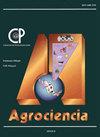ANALYSIS OF AGROFORESTRY RESEARCH IN MEXICO: A BIBLIOMETRIC APPROACH
IF 0.5
4区 农林科学
Q4 AGRICULTURE, MULTIDISCIPLINARY
引用次数: 0
Abstract
The world is currently confronted with a complex task involving the sustainable balance of food production and long-term consumption. One way to face this challenge is through agroforestry systems (ASF). At the national level, there is relevant information on the subject; however, few studies have attempted to analyze trends in agroforestry scientific development over time. In this sense, it was proposed that the number of ASF publications related to food security and natural resource conservation increase on an annual basis. The objective of the present study was to perform a quantitative analysis of agroforestry research published between 1990 and 2022 from Web of Science in Mexico with a bibliometric approach. There were 204 publications related to agroforestry systems, recording an increase of 86 % in the last decade. Among the scientific journals analyzed, Agroforestry Systems and Journal of Ethnobiology and Ethnomedicine registered the highest number of publications and citations. The most frequent terms mentioned in publications over 32 years were the relationship between the effects of ASF on crops, traditional management, local knowledge, and the conservation of natural resources. The Universidad Nacional Autónoma de México (UNAM) is the institution with the highest number of research works on the subject, mainly by scientists Alejandro Casas Fernandez and Isabel Moreno Calles, both individually and collaboratively. In conclusion, the number of publications on ASF increased during the time period studied, primarily in the area of food security.墨西哥农林业研究分析:文献计量学方法
目前,世界面临着一项复杂的任务,涉及粮食生产和长期消费的可持续平衡。应对这一挑战的一种方法是通过农林复合系统(ASF)。在国家一级,有关于这个问题的相关资料;然而,很少有研究试图分析农林业科学发展的趋势。从这个意义上说,建议每年增加与粮食安全和自然资源保护有关的ASF出版物的数量。本研究的目的是用文献计量学方法对1990年至2022年间发表在墨西哥Web of Science上的农林业研究进行定量分析。与农林复合系统有关的出版物有204种,在过去十年中增加了86%。在分析的科学期刊中,农林业系统和民族生物学和民族医学杂志的出版物和引用次数最多。32年来出版物中提到最多的术语是非洲猪瘟对作物的影响、传统管理、地方知识和自然资源保护之间的关系。墨西哥国立大学Autónoma (UNAM)在这方面的研究工作数量最多,主要是由科学家Alejandro Casas Fernandez和Isabel Moreno Calles单独或合作完成的。总之,在研究期间,非洲猪瘟的出版物数量有所增加,主要是在粮食安全领域。
本文章由计算机程序翻译,如有差异,请以英文原文为准。
求助全文
约1分钟内获得全文
求助全文
来源期刊

Agrociencia
农林科学-农业综合
CiteScore
0.50
自引率
33.30%
发文量
51
审稿时长
18-36 weeks
期刊介绍:
AGROCIENCIA is a scientific journal created and sponsored by the Colegio de Postgraduados. Its main objective is the publication and diffusion of agricultural, animal and forestry sciences research results from mexican and foreign scientists. All contributions are peer reviewed. Starting in the year 2000, AGROCIENCIA became a bimonthly and fully bilingual journal (Spanish and English versions in the same issue). Since 2007 appears every month and a half (eight issues per year). In addition to the printed issues, the full content is available in electronic format.
 求助内容:
求助内容: 应助结果提醒方式:
应助结果提醒方式:


